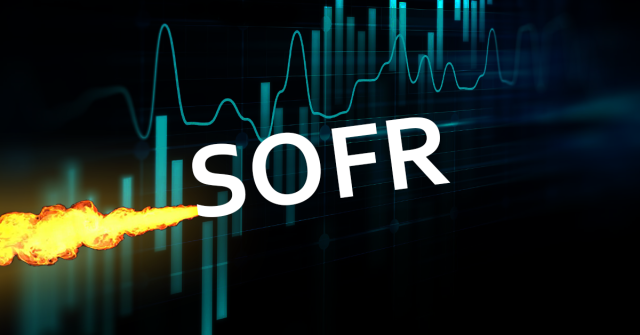The Market Impact of SOFR Discounting: What We Know So Far

Just about three years ago, the capital markets industry started preparations for the transition to alternative reference rates when it was announced in July 2017 that LIBOR would be phased out by the end of 2021. A month earlier in that same year, SOFR (Secured Overnight Financing Rate), which is derived from transactions in the overnight Treasury repurchase market, was chosen as the alternative reference benchmark to replace U.S. LIBOR. Just under two years ago, as of April 3, 2018, the U.S. Federal Reserve began publishing SOFR data.
While there are still two years left before LIBOR is phased out, and while actual transactions underlying LIBOR have diminished considerably, the use of LIBOR as a reference rate continues to be quite pervasive. In the U.S., the gross notional value of all financial contracts and securities tied to U.S. dollar LIBOR is around $200 trillion. To help express the magnitude of that number, it is the equivalent of about 10 times the U.S. GDP.
Fortunately, a fairly considerable amount of SOFR trading activity has taken place in 2019, and this has helped to clarify how the switch from OIS (which is based on the daily effective Fed Funds rate, or EFFR) to SOFR discounting will impact the market.
A Word on SOFR Volatility
In our analyses, we experienced several effects of moving to SOFR. I go into detail regarding the changes brought on by the transition in my whitepaper, Analyzing the Market Impact of SOFR Discounting. Here, I provide a brief overview.
The first critical issue to be aware of is that, day-to-day, SOFR is more volatile than EFFR. The amount of daily volatility in SOFR depends on a number of factors, but primarily it is due to day-to-day fluctuations in supply and demand. Regardless of the factors, some kind of average of SOFR (determined using daily compounding or arithmetic averaging), not a single day’s reading of the rate, is used in financial contracts. An average of SOFR accurately reflects movements in interest rates over a given period of time and, thus, the day-to-day volatility is smoothed out.
In the whitepaper, I also discuss the differences between OIS curves and SOFR curves, SOFR discounting risk, and preparing for the switch from LIBOR to SOFR-based underlying.
Comparing SOFR Curves to OIS Curves
To explain the variances between the two curves, I charted a SOFR curve and an associated OIS curve together on two different days, one being at a quarter-end (September 30, 2019) and the other being on the second business day after the quarter-end period (October 2, 2019). One chart showed the impact of rate spikes at shorter tenors and the other showed them at longer tenors. The two charts show that the differences between SOFR and OIS rates have a more observable impact on shorter tenors (up to around 5 years). At the longer tenors, the rate fluctuations are much less observable, which is partially due to the lack of liquidity of the SOFR derivatives market at that range.
Understanding SOFR Discounting Risk
Many consider the next major milestone in the LIBOR transition, from the perspective of the introduction of a new market practice, to be SOFR discounting. From a risk perspective, this means market risk will now be dependent on SOFR instead of OIS, and it could require completely different hedging vehicles.
We plotted a 1-day forward rate and a discount factor using the same two dates on a set of 1-year to 30-year tenors. The forward rate difference between SOFR and OIS doesn’t change by much on the two dates. This is what we expect due to the market quotes of the basis spread between the two rates. However, when comparing only the OIS forward rates or only the SOFR forward rates on the two dates, we see a substantial amount of difference at the shorter tenors. There are more than 10 basis points (bps) of difference for the tenors up to 5 years. As the tenor increases from there, the spread becomes smaller. But still, even at 30 years the SOFR rates on the two dates differ by more than 3 bps, which is not a small difference.
In order to understand the impact on the present value of a future cashflow, we also look at the discount factors. The first observation is that SOFR and OIS discounting factors can differ quite a bit, particularly at the longer tenors: the 25- and 30-year discount factor differences are above 30 bps and 40 bps, respectively. Meanwhile, even in the 2- to 5-year range, the difference is more than 10 bps, which is not insignificant.
At the same time, the difference between the OIS discount factors and between the SOFR discount factors does not change much between the two dates. However, the discount factors of the SOFR rate noticeably changes between the two dates, even larger than the difference between the SOFR and OIS discount factor. This would pose a challenge in risk management, given the SOFR derivatives market is not liquid enough for efficient hedging.
This provides a strong indication that as a hedge instrument, the SOFR-Fed Funds basis swap may be useful because it is the most relevant SOFR instrument available concerning the discounting risk.
One last and very important point that needs to be made is that the discounting switch to SOFR is just the first step in using SOFR in the derivatives market. The next step will be replacing LIBOR with SOFR as the underlying of the derivatives market. There are two considerations regarding how SOFR may impact the underlying of a derivative, and I explain these in detail in the whitepaper.
Understand what SOFR Discounting Means to Your Business
When you think about the practice of SOFR discounting for your own business, the likelihood is that your practice will not be static in terms of how you produce the SOFR curve. It will depend on where market liquidity is moving at a given time and how you want to address your specific business needs as it regards curve construction. What is crucial is to ensure you always have correct valuations and appropriate risk management, particularly during the period of the LIBOR transition.
I also want to emphasize that firms will need to develop a robust action plan to transition an existing portfolio of LIBOR exposures to SOFR products. As you can imagine, it will be a huge effort for the industry to transfer from such a widely used rate to SOFR. It will involve the undertaking of very complicated operational tasks, such as contract renegotiations, the placement of fallback language in legacy contracts, new curve modelling, IT systems upgrades, and other requirements. Additionally, it will require an effective plan for communicating across functional areas, internal stakeholders, clients, regulators, and, if applicable, external systems providers and data vendors.
To obtain a copy of the whitepaper, Analyzing the Market Impact of SOFR Discounting, click here.
About the Author
Dr. Ping Sun is SVP of Financial Engineering at Numerix. He is also the product manager of the Numerix CrossAsset analytics platform. Dr. Sun’s work has appeared in a number of publications and academic journals, and he has been showcased as a lecturer at a range of academic events and industry conferences. Dr. Sun was a postdoctoral fellow at Rutgers University and he earned a doctorate degree in Physics from City College of New York. He also received an undergraduate degree in Physics from Fudan University in Shanghai, China.


